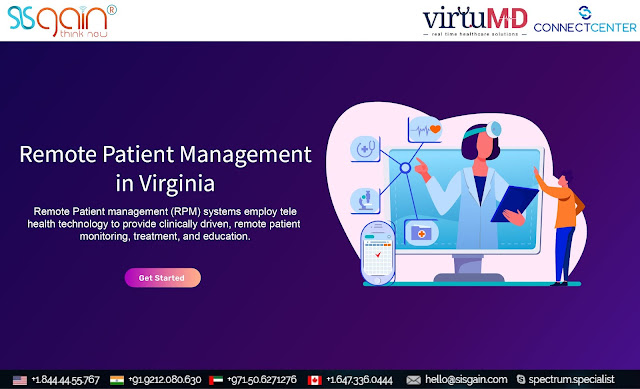Ask Your Top Remote Patients monitoring companies in Virginia These 10 Questions.
Selecting the right remote patient monitoring companies for you is most important. Suppose you determine that you like the concept of the remote health monitoring system in Richmond. In that case, you will move into the selection phase of top remote patient monitoring companies in Virginia.
There are ten key questions you should ask from your top remote patient monitoring companies in Virginia.
#1- In which platform remote patient monitoring applications are developed?
All RPM applications are developed for both Android and IOS application platforms. It is necessary; you should ask this question to your top remote patient monitoring development companies in Virginia.
#2- How is your remote patient application beneficial for Doctors and patients?
RPM application provides benefits to patients, and they allow nurses to monitor patients' health which provides a better care quality to patients.
RPM also allows doctors to provide the highest quality care and keep track of patients' medical records.
#3- What kind of remote patient monitoring services would you like to provide?
Speciality clinics should seek a system incorporating RPM equipment to collect and analyse the most critical patient information. Cardiologists, for example, maybe more concerned with blood pressure and weight, whereas an endocrinologist may be more concerned with blood glucose. On the other hand, general or family practises should choose which RPM services to provide according to their target patient demographic and problems they want to treat.
#4- What is the difficulty in setting up and using a remote patient monitoring system?
Certain remote health monitoring systems in Richmond will give customers the system and user instructions, but they will be required to do the bulk or all setup works themselves. Other vendors will be more involved in the setup process, which will help to speed up the process, ensure that all questions are answered, and eliminate any barriers to success.
#5- What is the process for coding and billing?
The type of remote patient monitoring system you pick will affect how often and accurately coding and billing are performed, as well as how much time personnel must spend invoicing for services. When interacting with vendors, determine how their Remote patient monitoring system in Richmond handles coding and billing. If you utilise an excellent RPM system, this method will be more accessible and efficient.
#6- What kind of RPM programme do I want for my clinic in terms of service?
The type of RPM software utilised by your practice will be influenced by the remote patient monitoring system you use. Understanding the distinctions between RPM programme types can assist you in deciding which programme is best for your practice.
#7- What impact has COVID-19 had on RPM coverage?
According to the HIMSS article referenced above, CMS has made many changes to how it handles RPM. These are long-term fixes as well as adjustments that will endure the duration of the epidemic. Some of them are as follows:
1- In the future, RPM will be used for Medicare individuals with acute and chronic diseases, broadening the coverage area to include those who don't just have chronic illnesses.
2- CMS stated that RPM might be given to new and current Medicare enrollees during the public health emergency.
#8- For RPM services to be chargeable during the epidemic, how many days must they be delivered?
Certain doctors and top remote patient monitoring companies in Virginia adopted the 2-day RPM requirement for all patients throughout the PHE. This is an incorrect perception. In early 2021, CMS stated that the 2-day RPM requirement should only be applied to people who have a COVID-19 diagnosis, whether suspected or confirmed.
#9- What impact did the FDA's March 2020 guideline have on RPM?
During the pandemic, the US Food and Drug Administration (FDA) recommended that non-invasive RPM devices be made more available and capable to help patient monitoring while reducing patient and healthcare provider contact and exposure. The guidance covers FDA-cleared non-invasive blood pressure devices, pulse oximeters, cardiac monitors, and electrocardiograph (ECG) devices.
#10- What does a provider require to provide RPM services?
The method for setting up RPM programmes varies due to the unique nature of each programme. Although the amount of work needed of providers varies with each RPM programme, the processes listed below are typical for top remote patient monitoring companies in Virginia that choose to deliver RPM services with little or no outside support.
1- Speak with private payers to determine coverage.
2- Consider who you will accept as RPM patients.
3- Decide which condition you'll be dealing with.
4- Select the device that will be used to distribute RPM.




Comments
Post a Comment